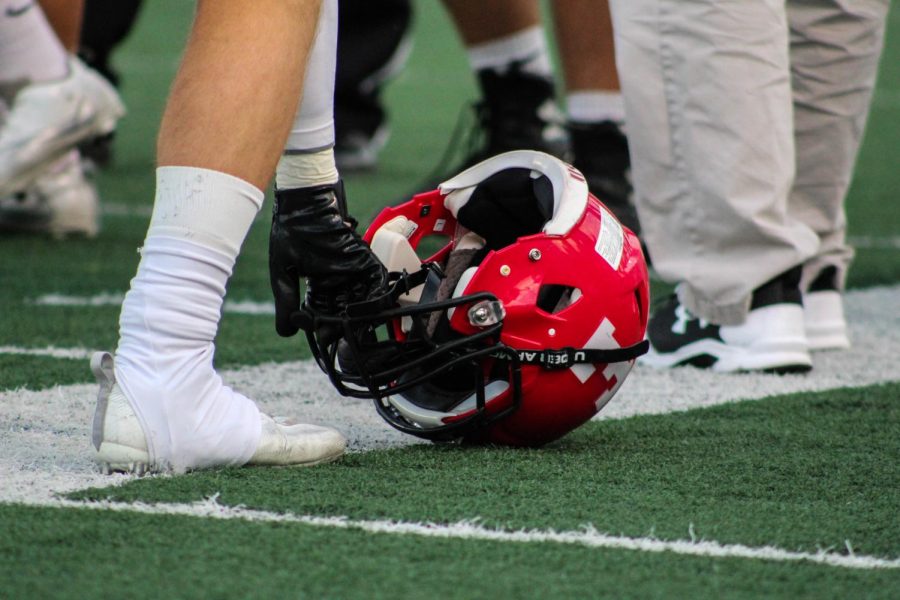Taking a Hit
Football is Hurting its Players
May 21, 2018
Football is one of the most popular sports in America, but one of the most damaging to its players. In a sport with tackling in its definition, it’s not surprising that football players often receive concussions and other serious head injuries. Even at the high school level repetitive hits to the head can result in severe consequences.
This repetitive brain trauma, especially at the college and professional level, can result in concussions, or in serious cases, chronic traumatic encephalopathy (CTE). CTE is a degenerative brain disease that leads to the death of brain cells. Symptoms include depression, anxiety, memory loss, suicidal behavior, and dementia. In a recent study of the brains of 202 deceased football players, 87 percent had CTE, and of the 111 brains of NFL players, 110 were diagnosed with CTE. While most of the high school football players studied only had mild CTE, they still suffered symptoms of the disease. If they continued to play into college or on a professional level their symptoms would have worsened.
“Football is at an increased risk compared to other sports, anytime you put that much padding on someone and you have two players and say run full speed at each other, any injury is higher,” athletic trainer Whitney Vessar said.
High schools here in Omaha are using new technology in an attempt to combat head injuries in their football players. The Omaha Public School District recently received special helmets for all of their football players that monitor the force and severity of the hits suffered by the player. Sensors embedded in the helmets receive and send data that immediately alerts coaches when and if a player needs to get checked out. Coaches can track this information from the sidelines using a hand-held device. However, these helmets are expensive, usually around $400 dollars apiece, and the technology behind them is still very new.
“Potentially it can help you discover some injuries that otherwise weren’t discovered,” Athletic Director Mark King said.
Vessar discussed the benefits of this new technology. “ ” While there is no helmet that can prevent concussions, this technology could make them easier to detect.
Other high schools in the Omaha area are also looking at these helmets, including Creighton Prep. While Elkhorn hasn’t really considered them for use, EHS coaches are still doing whatever they can to keep football players safe. On average, the Elkhorn High School team receives about 20 concussions every year. While helmets won’t lower this number, coaches at EHS are focusing on education to stop their players from hurting themselves or others. “We can’t prevent [concussions] entirely so we rely on technique,” Vessar said.
If a player does receive a hit they are given a symptom test that measures physical, emotional, and cognitive symptoms to determine if a player has received a head injury. “We are doing everything available to us to help prevent concussion, and if someone does get it, help them recover as fast as they can,” King said.


